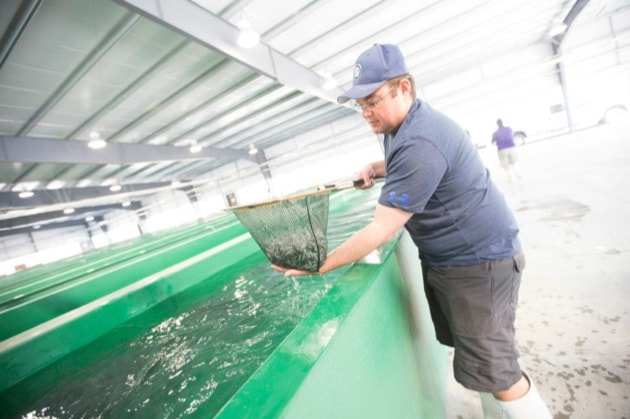More than 200,000 sockeye salmon fry are expected be released into Okanagan Lake by the Okanagan Nation Alliance (ONA) over the next several weeks in its attempt to reintroduce the salmon to the Okanagan.
But the planned fry release will go ahead without the support of the provincial government.
Fisheries staff from the ONA will release some 70,000 fry in three different stream systems on Okanagan Lake: Mission Creek in Kelowna, Trout Creek in Summerland and 6 Mile Creek near Vernon.
The planned release follows a sockeye re-introduction the ONA has done for the past 12 years on Skaha Lake in Penticton.
"Our salmon are sacred as are our constitutional rights," said ONA grand chief Stewart Phillip. "We have been working collaboratively for over a decade with the Department of Fisheries and Oceans Canada and the province of B.C. to study the impacts of Okanagan salmon on the ecosystem. The results have proven what we have always known: That these salmon have always been here and that there are no negative impacts. We are happy to have the support of DFO, yet remain frustrated and confused as to why the province of B.C. remains opposed to these efforts."
According to Ministry of Forests, Lands and Natural Resources media relations, the provincial government has been working with the ONA and the DFO as part of the Canadian Okanagan Basin Technical Working Group (COBTWG) to study the effects of the sockeye introductions into Skaha Lake.
Media relations officer Greig Bethel said the province believes more study should be done before the release.
The first release of the fry was set for Friday night near Vernon where according to Okanagan Indian Band chief Byron Louis, his people traditionally fished and traded with not only sockeye, but with other salmon species such as chinook, coho and steelhead, until development such as dams on the Columbia River and Okanagan River systems forced the salmon species to near extinction in the Okanagan.
Due to a death in the band, the release has now been delayed.
Louis says his band has been working since 1995 to get authority to try and re-introduce the salmon to Okanagan Lake only to come up against many barriers.
"We're so tired of being denied something that was fundamental to our people and our culture," said Louis. "This is something we subsisted on for generations. It's such a relief to finally get to this point. We're not there yet because it's still going to be about getting the salmon back (once they go to the ocean) but at least they are back to where they belong and that's in Okanagan Lake. It's very good and it's about time. We shouldn't have had to go through what we did to get to this point."
Fisheries managers with the Okanagan Nation Alliance will release the fry, which have been raised at the ONA's 25,000 square foot hatchery in Penticton. Similar efforts by the ONA over the past 12 years have resulted in sockeye salmon returning to Skaha Lake in Penticton, including a high of 20,000 sockeye during one return.
"We have seen the successful reintroduction into Skaha Lake and we hope to see that in Okanagan Lake as well," said Howie Wright, ONA fisheries manager, who said concerns raised by the province included the possible impacts on native kokanee. "We used Skaha as an experiment for the past 12 years. We have not been able to see any detectable impact on the kokanee population."
According to the provincial government, they feel the necessary scientific work has not yet been done to determine the risk to the distinctive resident kokanee populations in Okanagan Lake.
But Wright said his studies have shown kokanee stocks are more affected by mysid shrimp, originally introduced into Okanagan Lake in 1966 by provincial fisheries managers of the day, as a potential food for kokanee. However the mysids turned out to compete with kokanee for food and in some lakes, even decimated kokanee stocks.
Wright says once released into Okanagan Lake, the sockeye fry will spend a year in the lake before heading for the ocean through the Columbia system, then returning to Okanagan Lake as adults.
"Our long term ultimate goal is to have a self-sustaining sockeye population returning to Skaha and to Okanagan Lake where man doesn't have to intervene," said Wright. "I think based on the success we have had with Skaha Lake, my feeling is this will happen in Okanagan Lake. We've taken a step-by-step approach to increase their chances for long term success. My guess is we will have sockeye salmon in Okanagan Lake."



